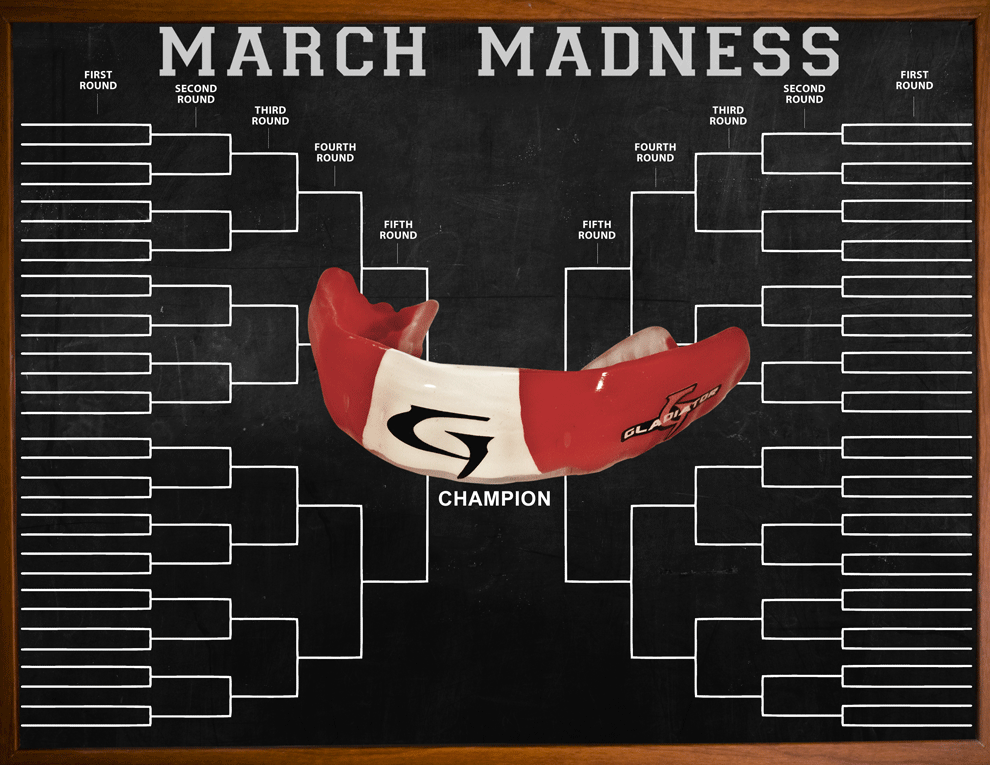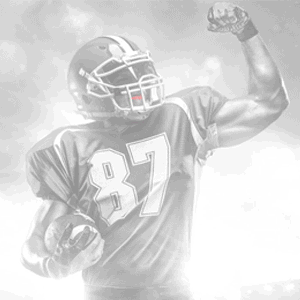Mouthguard Madness: 4 Tips To Becoming Champion Of Player Protection

 It’s March, and you know what that means: its madness time! From the NCAA tournaments to NFL free agency, the playoff pushes in the NBA and NHL to baseball’s spring training and the start of all the spring sports seasons, this is one of the craziest months on the sports calendar.
It’s March, and you know what that means: its madness time! From the NCAA tournaments to NFL free agency, the playoff pushes in the NBA and NHL to baseball’s spring training and the start of all the spring sports seasons, this is one of the craziest months on the sports calendar.
But let’s take a quick breather from such a hectic schedule to discuss another type of madness — mouthguard madness: the idea that teams and athletes still use mouthguards that were designed in the 1960s, in the year 2015!
When it comes to mouthguards, do you really know what’s important?
Sure, team colors, logos and personalized names and numbers make your team’s mouthguards valuable to your players and looking good is important, but what else do your players need? In honor of the upcoming Final Four, here are four important tips to help you determine exactly what is important and navigate the madness of mouthguards:
1. Let It Flow
One of the biggest complaints athletes have about mouthguards is that they are uncomfortable, making it difficult to breathe and speak. That’s because most mouthguards have unnecessary material in the free flow space — the areas behind the back of your upper front teeth, on the inside of your upper molars and on the roof of your mouth. This is where thick, protective material is unnecessary and impedes breathing and speaking.
Press your thumb to the back of your upper front teeth and try to speak. As you’ll notice, your speech turns into a muffled lisp. Your players need a mouthguard that keeps this area clear or has as little material as possible to allow clearer speech and breathing. That makes their mouthguards significantly more comfortable and much easier to wear.
2. Gags For Nothing
Similar to the free flow space, the area of the mouth where the soft palate is located — the roof of the mouth after the second molar — is easily irritated when a mouthguard has too much material.
That’s because the soft palate is where the gag reflex is generated and nothing is more uncomfortable than something that makes you gag. Make sure your players’ mouthguards do not have any material that comes close to this area to insure their comfort.
3. Little Material, Big Protection
What’s the number one reason for your players to wear mouthguards? For protection, obviously! But, mouthguards only protect if they’re worn properly, and uncomfortable, outdated mouthguards are frequently left behind in lockers or “lost” before players even step on the field, court or ice.
Thankfully, mouthguards are now thinner and lighter than ever before. Comfort is key, and the right mouthguard provides a more intimate fit with better protection, while allowing athletes to breathe, communicate and drink comfortably without removing their mouthguard.
However, make sure your players’ mouthguards aren’t too thin. Some manufacturers may fall below the necessary level of protection in order to make their mouthguards thinner and more comfortable. Be sure your team’s mouthguards are no less than 4mm thick in the important impact zones to properly absorb and disperse impact.
4. Do No Harm
You wouldn’t send your players out on the field, court or ice with a cracked helmet, right?
While a little wear and tear is expected over time, mouthguards should not be worn with any physical damage. Much like an ill-fitting guard, a mouthguard that is starting to rip or tear is a mouthguard with compromised comfort and protection.
Rips and tears have the ability to cause gum and tissue irritation, which in time may become infected. Damage also allows saliva and water to get into the guard, speeding up the deterioration process, as moisture gives bacteria the potential to grow. Those are easily avoided complications.
Sift through the mouthguard madness and become a champion of player protection with the most comfortable, protective and personalized custom mouthguard available.






